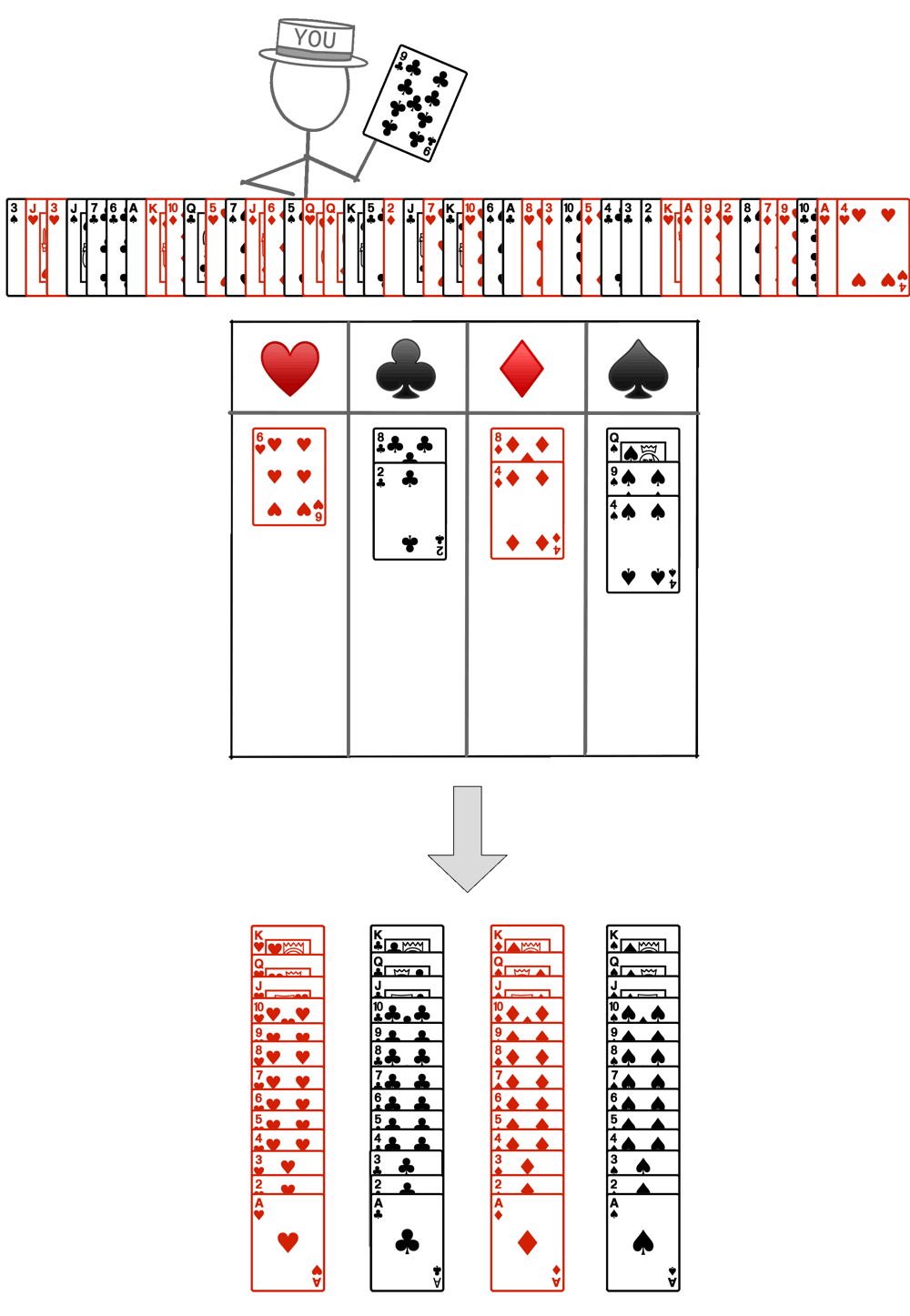One Worker
Suppose you want to sort a deck of cards by color, suit, and face value. Consider how you might approach the task if you were working by yourself. Would you spread the cards over the tabletop and repeatedly pick the lowest value card to make a sorted stack? Alternatively, would you designate a pile for each suit and insert cards into the piles in sorted order? We will call the sequence of activities you use to turn the pile of unsorted cards into sorted cards your workflow. Workflow is not a computing-specific term; it is a general term for the procedure you use to turn input into your choice of output.


No matter which card sorting strategy (algorithm) you employ, you will need to make many comparisons (operations), one at a time. In this case, you are acting like a serial program, executing a sequence of operations, one at a time. No matter how clever your sort algorithm, you will eventually reach a limit on how quickly you can perform this sorting task by yourself.
CVW material development is supported by NSF OAC awards 1854828, 2321040, 2323116 (UT Austin) and 2005506 (Indiana University)